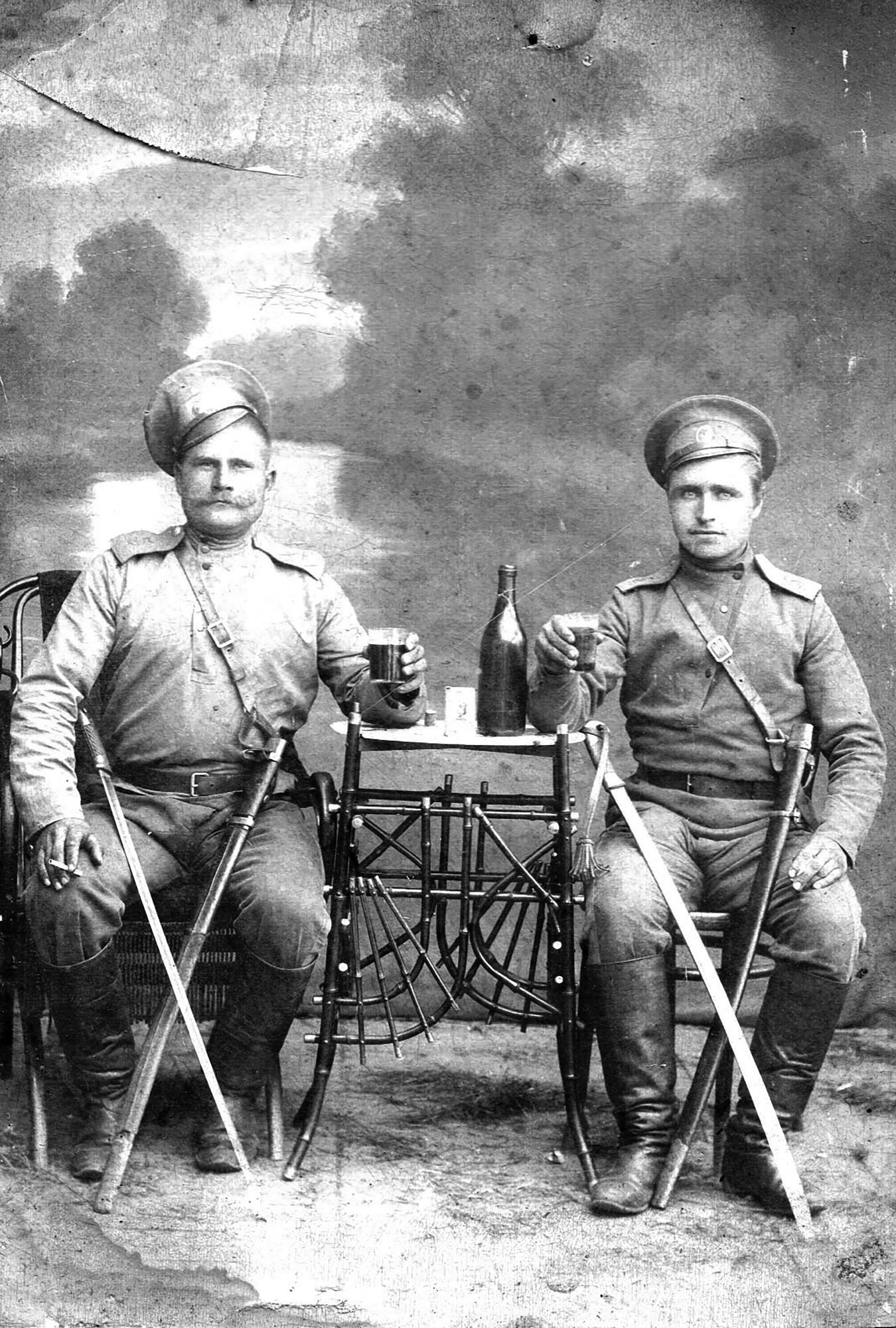This photograph was taken either during the active service of a Cossack from Tanalyk, called Dmitry Vazhenin, who served in the Fifth Orenburg Cossack Regiment; or soon after it, a few years before the start of the Civil War. However, it does demonstrate what Cossack fighters looked like during the Civil War. Almost nothing is known about whether Dmitry Vazhenin took part in the civil war. According to family stories, he fought for Alexander Dutov and then disappeared. Later, someone told his family that he became ill in the Guryev region and died.
It is possible that he fought in the ranks of the Orenburg Cossack regiment as part of the Orenburg Cossack troops of the southern army (which totaled around two thousand soldiers). This regiment retreated from the Tashkent railway line (Orenburg - Aktyubinsk section) towards the West in early September 1919. It then joined the Ural Cossacks, who were part of the Ural Separate army. The Orenburg Cossacks were led by Major General Akulinin, chief of the General Staff. General Akulinin’s decision to retreat to the West, rather than the East as a large part of the southern army’s troops had already done, is explained by the success of the Denikin’s troops and the hope to quickly join forces with the Ural Cossacks.
The First Orenburg Cossack Regiment joined forces with the Ural Separate Army and covered its flank near the city of Oiyl. On 11 November 1919, the regiment was disbanded by the Ural Commanders, and its units went sent towards the front at Lbishchensk. Only the Orenburg division (led by Colonel Isaenko) remained in Oiyl. The soldiers had no winter uniforms as the cold weather started to draw in. An epidemic of typhoid broke out amongst the Cossacks, and soon the number of sick outweighed the number of healthy fighters.
As a result of the fall of Guryev (on 5 January 1920), the Ural Separate Army, which the Orenburg Cossacks were a part of, was driven towards the frozen Caspian sea. In order to avoid becoming encircled and butchered, commanding officer Tolstov lead the 15,000 troops along the unguarded eastern coast of the Caspian sea, towards the south. No more than 3,000 troops arrived at Fort Aleksandrovskii after the two-month long journey (75% of those who arrived were said to be suffering from frostbite). The rest had died from the severe cold, typhoid and starvation.
It is possible that he fought in the ranks of the Orenburg Cossack regiment as part of the Orenburg Cossack troops of the southern army (which totaled around two thousand soldiers). This regiment retreated from the Tashkent railway line (Orenburg - Aktyubinsk section) towards the West in early September 1919. It then joined the Ural Cossacks, who were part of the Ural Separate army. The Orenburg Cossacks were led by Major General Akulinin, chief of the General Staff. General Akulinin’s decision to retreat to the West, rather than the East as a large part of the southern army’s troops had already done, is explained by the success of the Denikin’s troops and the hope to quickly join forces with the Ural Cossacks.
The First Orenburg Cossack Regiment joined forces with the Ural Separate Army and covered its flank near the city of Oiyl. On 11 November 1919, the regiment was disbanded by the Ural Commanders, and its units went sent towards the front at Lbishchensk. Only the Orenburg division (led by Colonel Isaenko) remained in Oiyl. The soldiers had no winter uniforms as the cold weather started to draw in. An epidemic of typhoid broke out amongst the Cossacks, and soon the number of sick outweighed the number of healthy fighters.
As a result of the fall of Guryev (on 5 January 1920), the Ural Separate Army, which the Orenburg Cossacks were a part of, was driven towards the frozen Caspian sea. In order to avoid becoming encircled and butchered, commanding officer Tolstov lead the 15,000 troops along the unguarded eastern coast of the Caspian sea, towards the south. No more than 3,000 troops arrived at Fort Aleksandrovskii after the two-month long journey (75% of those who arrived were said to be suffering from frostbite). The rest had died from the severe cold, typhoid and starvation.



